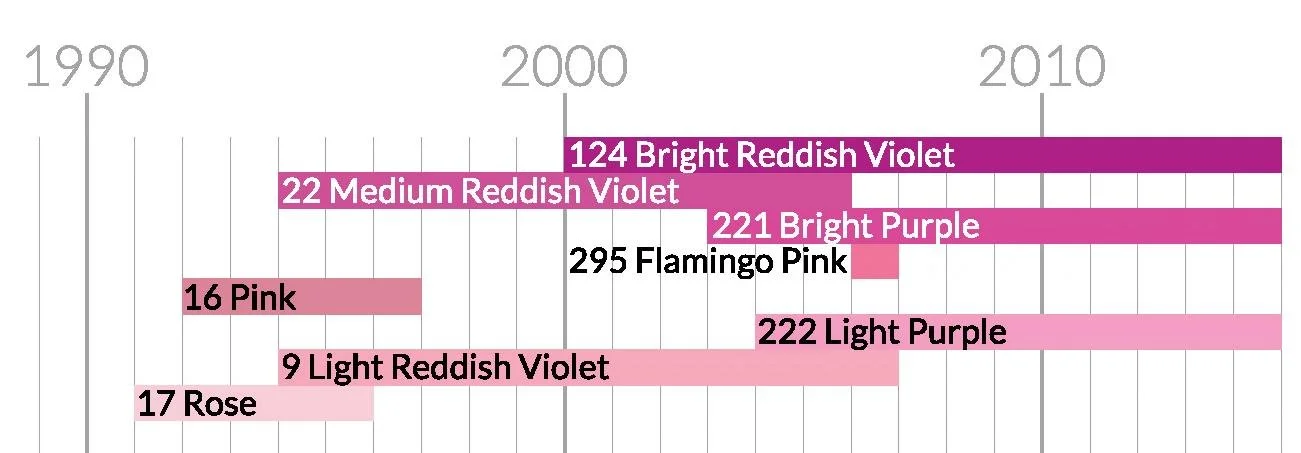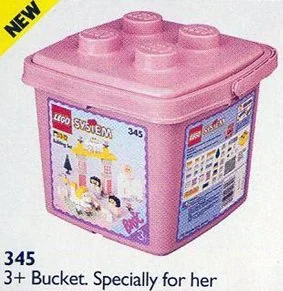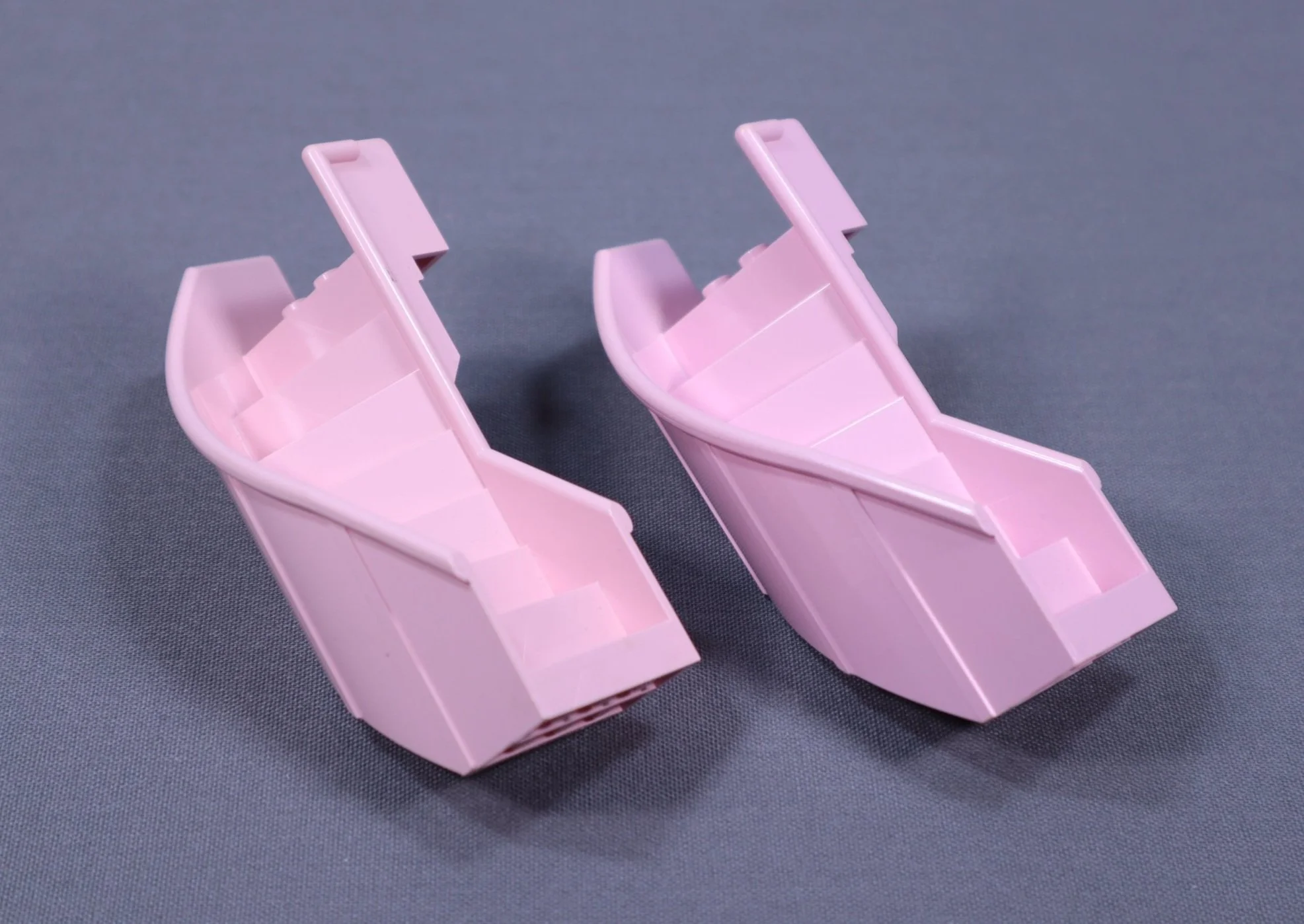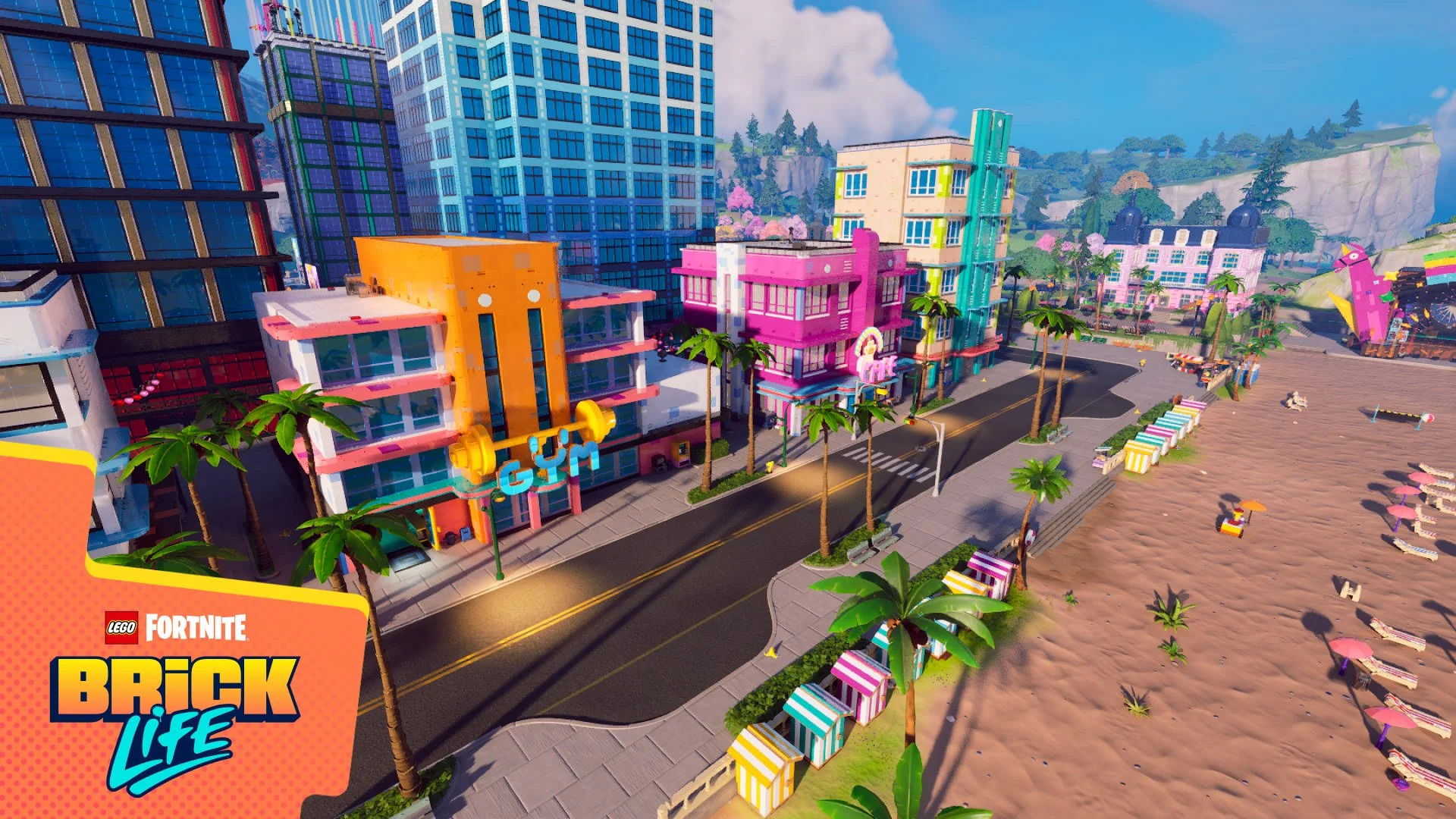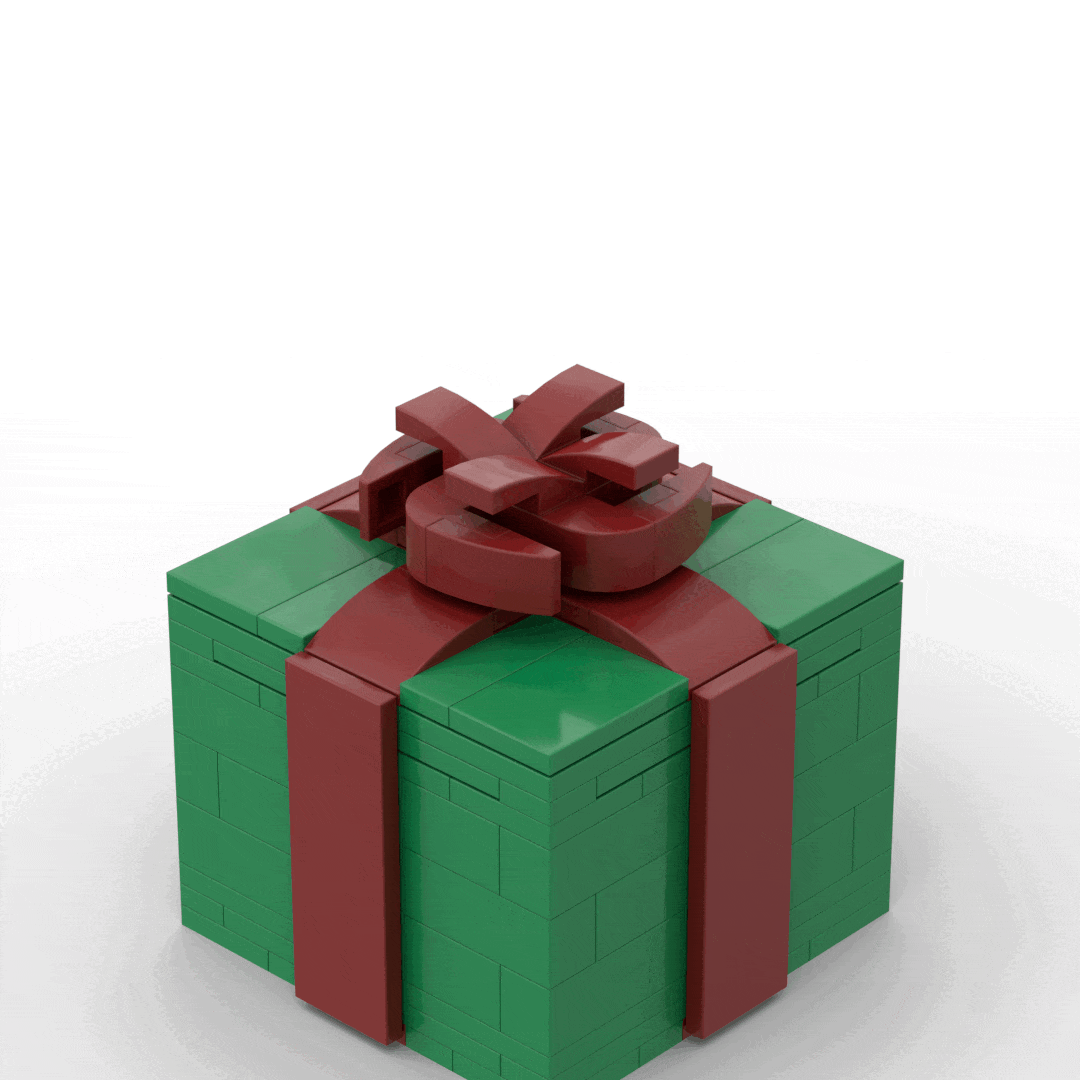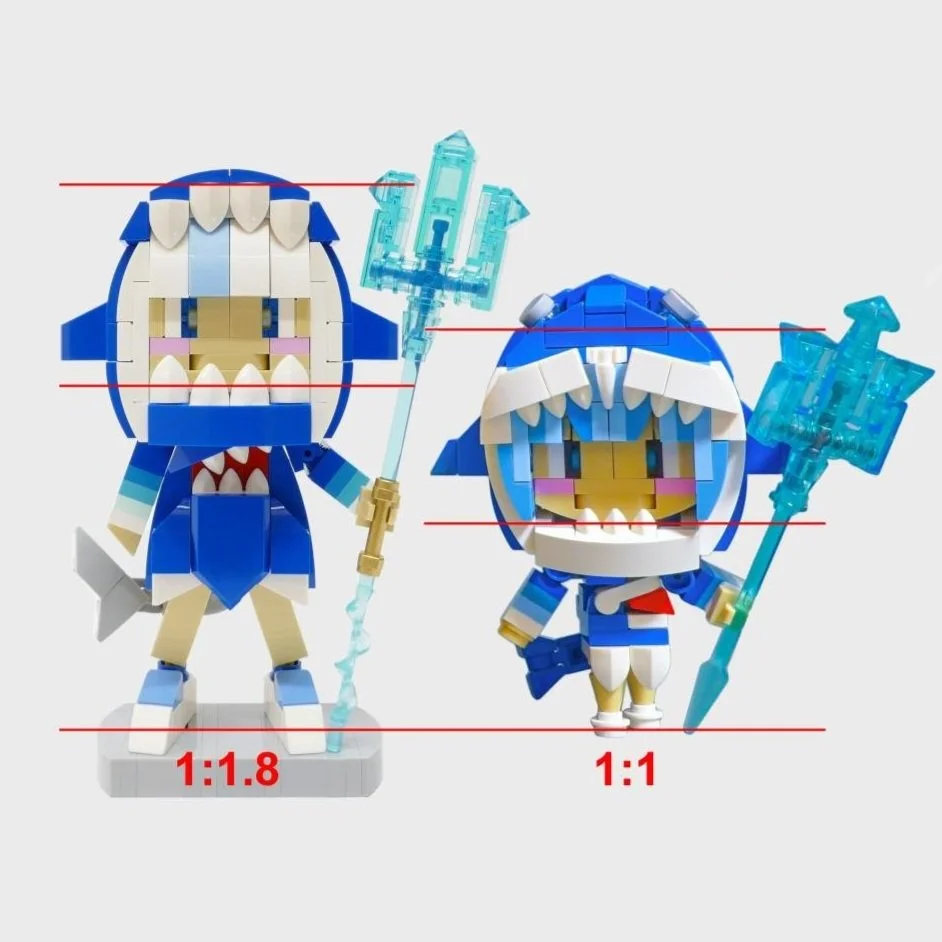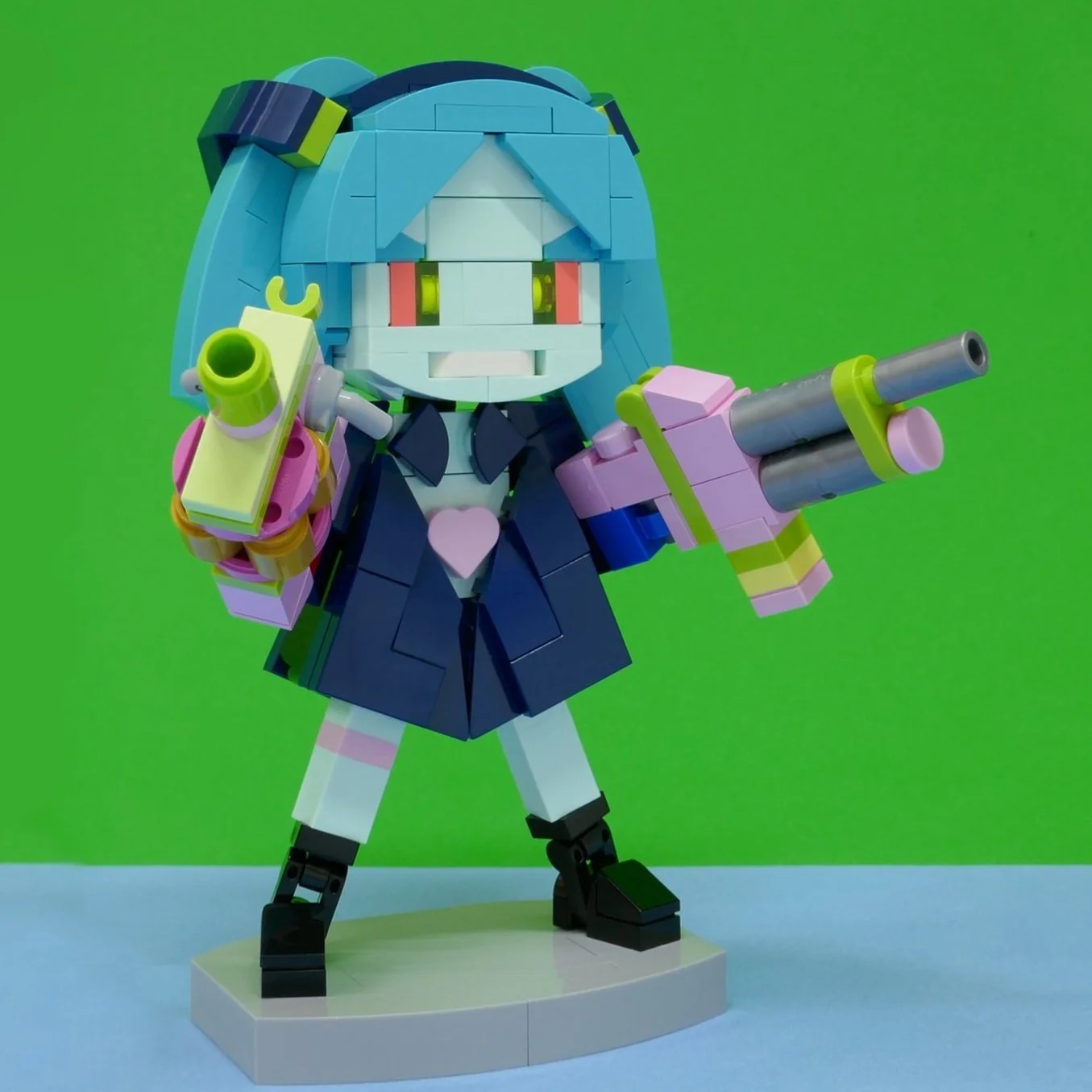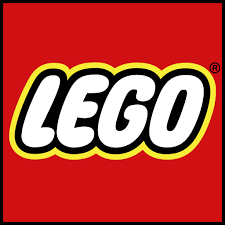The Shady Side of Paradisa: The Problem with Pink
/Welcome to Paradisa: the tropical idyll of Classic Town. This is the setting for LEGO’s first foray into minifigure play sets within the much-debated ‘toys for girls’ market.
This small theme ran sparsely from 1992 to 1997, giving way to other pink-dominated themes like Scala and Belville (let’s not forget Clikits!) before minidolls arrived in Heartlake City in 2012.
However, all is not as utopian as it seems in Paradisa. Island life has a shady side…
Miami Vice or Paradisa Virtue?
The influence of the police procedural ‘Miami Vice’ on fashion in the 1980s is a thesis itself—suffice it to say that the mid-1980s saw a dramatic rise in the popularity of pastel shades and an Art Deco revival. LEGO was characteristically behind the curve in responding to the trend, eventually launching the Paradisa subtheme seven years later in the early 1990s.
Did the influence end with aesthetics, or did LEGO include other aspects of apparently crime-ridden mid-1980s Miami into their universe?
Pulling up at the drop point Dolphin Point is a sunglass-wearing smuggler who has received the lighthouse’s signal. There’s no sign of Detective Ace Brickman, so the crew can safely unload their cookies and get them ready for transfer to the downtown Pool Hall for a fun party.
Set 6414: Dolphin Point - Image via LEGO.
The ice cream and drinks shop at the base of the tower is clearly a front for other nefarious business practices—the 1x1 tiles in the freezer don’t really look like ice cream to me!
The smuggling might extend beyond the cookie supply—we also seem to have an exotic pet trade underway with the extremely large macaw held by the figure on the upper level.
The Paradisa theme is well-stocked with beverages—sipping cocktails by the beach was clearly on the designer’s mind at the time. The bar in this alternate build of 6416 Poolside Paradise is the perfect location for making a deal under the shade of a palm tree.
Set 6416: Poolside Paradise alternate build - Image via Peeron.
Are the figures at the table on a date, or having a ‘business’ meeting? Maybe the well-dressed waiter is an undercover cop listening in for clues and waiting to infiltrate the gang.
What are the high rollers on the left up to? The moustachioed and sunglass-wearing minifigures appear to be betting on the beachfront wheel of fortune. The latter must have been well paid for his recent delivery to the lighthouse.
Set 6409: Island Arcade - Image via Bricklink.
The action feature in this set even allows for humans to join the gambling fun by placing coins on the coloured tiles and spinning the printed dish.
There’s also a pram here which appears in several Paradisa sets, but there’s never any sign of an actual baby—is this just another prop to smuggle LEGO cookies with?!
Colour Theory: Shades of Pink
Okay, the seedy side of Paradisa is not why we’re really here. Let’s talk about shades of pink!
Soft beginnings
Colour 17 Rose a.k.a Paradisa Pink - Image © Rylie Howerter
One of Paradisa’s most notable contributions was the introduction of the colour pink to LEGO system sets, with colour number 17 Rose*. I refer to this beautiful dusky pastel pink colour as Paradisa Pink, and so do some others—but as we’ll find out, these things aren’t always consistent!
*Colour IDs used in this article are according to The LEGO Group numbering.
Sadly, the theme technically doesn’t hold the honour of introducing the very first pieces to be produced in this first pink hue. A couple of Duplo parts appeared in the same colour in the previous year, in 1991’s accessory set 2775 Bathroom.
(Who would have thought a toilet seat was the thing that finally made LEGO think, “Yes, we really need to make pink pieces now.”)
dUplo Set 2775: Bathroom Accessories - Image via Brickset
Rylie Howerter’s LEGO Colour Timeline is just one of her legendary resources which have been indispensable over my years spent unravelling the mysteries of LEGO colour (and thank you Rylie for additional clarifications for this article!). The extract below is particularly helpful in explaining the history of these various pink colours, which LEGO (somewhat inexplicably) categorises within the ‘purple’ family.
So, as we’ve established, the first (and my favourite) colour 17 Rose was released in 1991 in Duplo and 1992 in System pieces. At almost the same time, 16 Pink (which is really more of a dusky dark pink hue) was used in Duplo and Basic sets.
Colour 16 Pink a.k.a Duplo Pink - Image © Rylie Howerter
To my knowledge the only system parts in this colour are the familiar flower, door and window pane pieces often used in Basic and Freestyle sets.
These three parts appeared in set 345-2 and 1688-1, the outer buckets of which are also some sort of pink colour.
From the blurry old catalogue images it’s impossible to tell, so for scientific purposes I of course had to acquire both of these—not only to add the pastel-hued parts within to my collection, but also to confirm the bucket colour.
Catalogue Entry for Set 345-2 - Image via Bricklink
Catalogue Entry for Set 1688 - Image via Rebrickable
The result: they appear to be extremely close to the colour of the window panes (16 Pink), but are not an exact match. I’m not sure we’ll ever know if LEGO intended these to be a different colour, or if they are ostensibly the same just with differences caused by the surface texture or manufacturing process for the buckets.
Containers for Sets 345 and 1688 - image © SetToBuild
Comparison of 16 Pink System Pieces with Bucket - Image © SetToBuild
Changing Shades
Within a few short years, these lovely dusky colours were retired to make way for the quite similar but slightly brighter 9 Light Reddish Violet (Belville Pink) and 22 Medium Reddish Violet (Dark Pink) respectively. Both of these were released in the mid-1990s before the older colours retired a couple of years later.
During this initial overlap, some of the same pieces were produced in Belville Pink as had existed in Paradisa Pink. Paradisa sets were still being released, so later sets in the theme used colour 9 rather than colour 17 for their pale pastel pink pieces.
For example, 6416-1 Poolside Paradise uses the iconic curved stair piece in Paradisa Pink, but the later 6414-1 Dolphin Point uses Belville Pink for the same element. (Don’t be fooled by the set numbers being out of order—Poolside Paradise came first!)
It can be tricky to tell the difference between the two colours, especially if there’s any sun damage.
Comparison of 17 Rose and 9 Light Reddish Violet Stair Pieces - Image © SetToBuild
One of the most frustrating aspects of trying to use a relatively short-lived and little-known colour for MOC building is that shopping for Paradisa Pink parts on BrickLink can be a total minefield. You have to gamble on whether the seller knows if they’ve got Paradisa Pink, Belville Pink or modern Bright Pink pieces!
Infuriatingly, not only do many BrickLink sellers not know the difference, but the platform itself doesn’t actually distinguish between the two, calling both 17 Rose and 9 Light Reddish Violet just ‘Pink’ in their catalogue. This leads to many errors.
For example, right now one seller claims to have a 1x10 brick in BrickLink ‘Pink’—but unless someone has found a very rare batch of 1990s parts in a dusty corner of a workshop, the chances are that this is a mis-filed modern Bright Pink. One seller even claimed to have part number 36273 in pink, a scooter mould which was introduced in 2023! (Sadly this is now taken down, as I reported this listing before thinking that maybe I should have left it up there for you all to witness.)
…And Change Again
These light and medium ‘reddish violet’ colours lasted a bit longer than their predecessors, with their replacements 221 Bright Purple and 222 Light Purple introduced in the mid-2000s. These modern-day colours are more familiarly known as dark pink and bright pink.
Colour 22 Medium Reddish Violet a.k.a Dark Pink - Image © Rylie Howerter
Colour 221 Bright Purple a.k.a (Modern) Dark Pink - Image © Rylie Howerter
Colour 9 Light Reddish Violet a.k.a Belville Pink - Image © Rylie Howerter
Colour 222 Light Purple a.k.a Bright Pink - Image © Rylie Howerter
The old and new versions of dark pink (colours 22 and 221) are extremely similar, so I’m happier to forgive BrickLink for combining the two in their database.
I’m not going to lie, I’ve really never been a fan of modern Bright Pink. It’s been used to great effect (frogs, anyone?), but will always be a reminder of what we’ve lost. Each time I see it, I think that we could have had the much more subtle tones of Paradisa.
One notable exception to these modern replacements was the 2000 introduction of a third member of the ‘reddish violet’ family, 124 Bright Reddish Violet (Magenta), which lives on to the present day.
This colour I have no problem with—Andrea always was the LEGO Friend with the best colour scheme in my view.
You might also have noticed that ‘295 Flamingo Pink’ appeared in the middle of the timeline above—but that’s an article for another day: as it’s a very fun (but very rare) UV-reactive Clikits colour.
The Mystery of Colour 223
What isn’t in the timeline at all is the mysterious colour 223 Light Pink.
Peeron lists colour 223 as the LEGO number for their ‘ParaPink’ and correlates it to LDraw colour 77. However, LDraw colour 77 is actually LEGO colour 17 Rose, the proper Paradisa Pink. Rebrickable also conjoins colours 223 ['Light Pink'] and 17 ['Rose'] in its database. I’m not sure either of these sources are correct, and despite some discussion in this comment section, Rylie doesn’t have any evidence of this colour ever being used for system parts either. I’m happy to be corrected if anyone has more information!
Just to add to the fun, BrickLink also has a colour called Light Pink, which isn’t listed against any pieces in any of its inventories. Some sellers do seem to use this colour to signify Paradisa Pink, but this isn’t consistent and since it doesn’t align with the database it’s very hard to interrogate.
A Parade of Pink
If you got lost anywhere along the way, don’t worry—it’s taken me years to get to this point and there is always more to learn! The slideshow of pink-hued colours below is organised in release-date order and should hopefully help to summarise the seven colours we’ve talked about today. Rylie’s colour chart provides cross-referencing for how all the different fan sites refer to these colours.
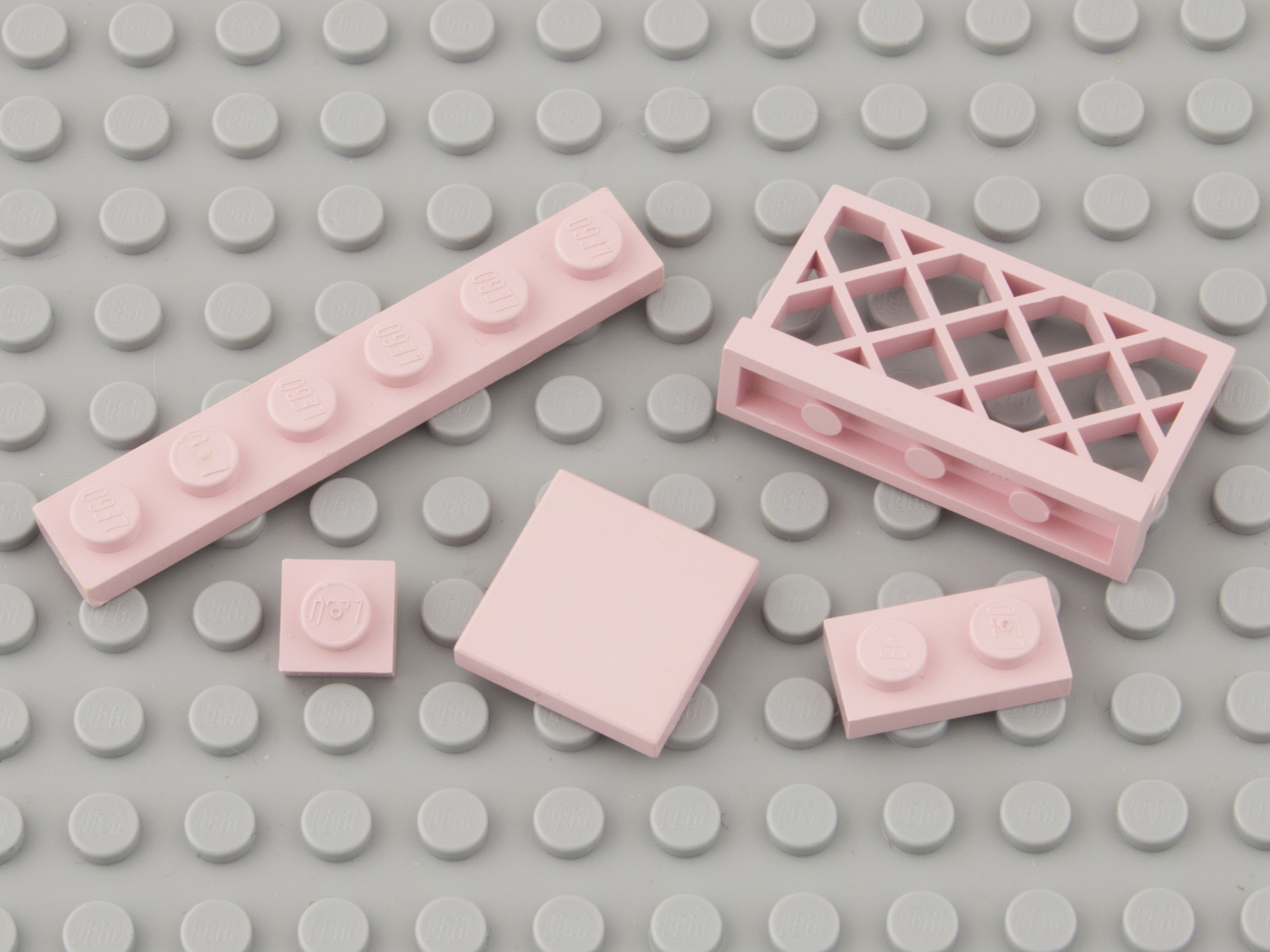
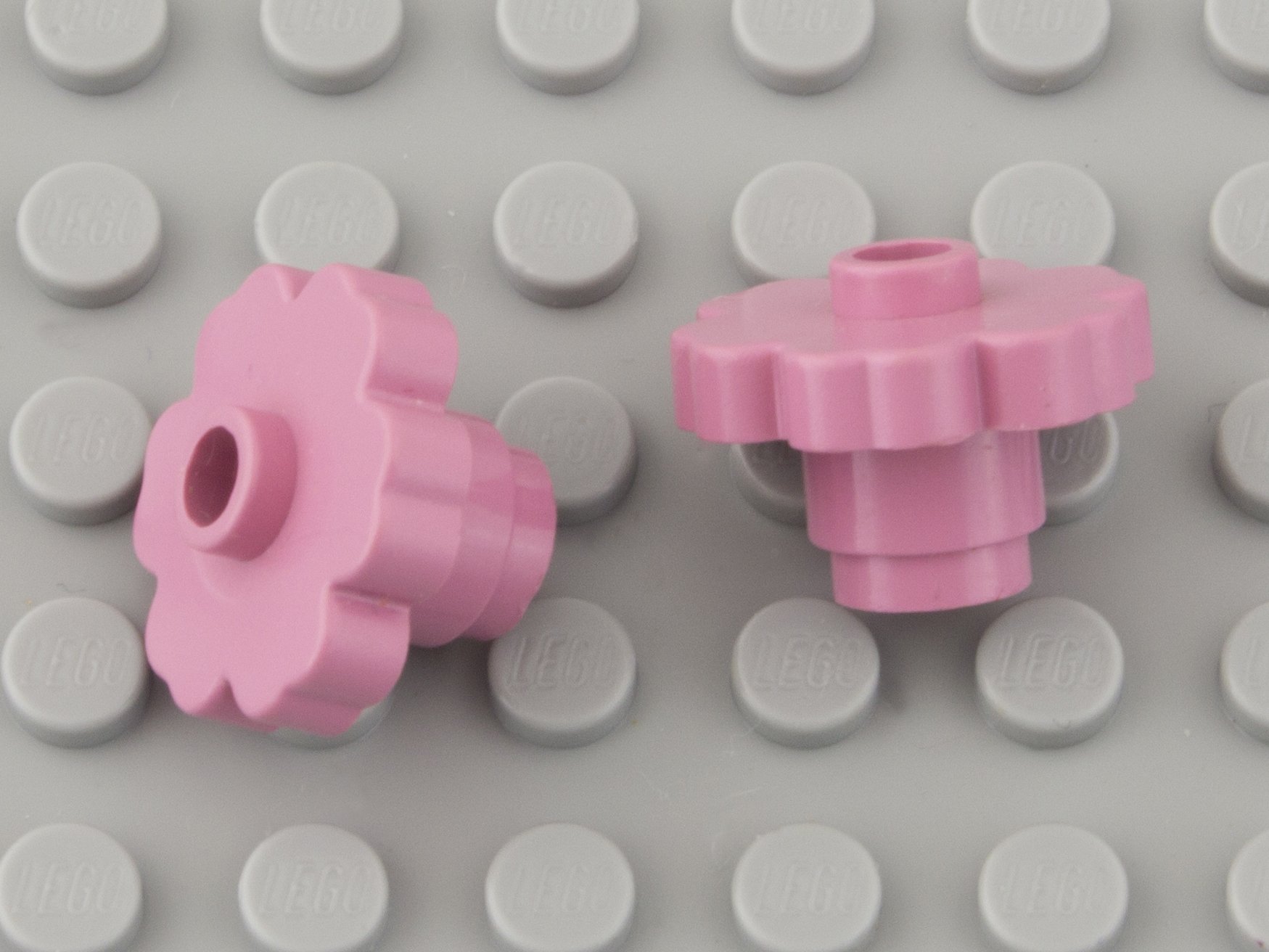
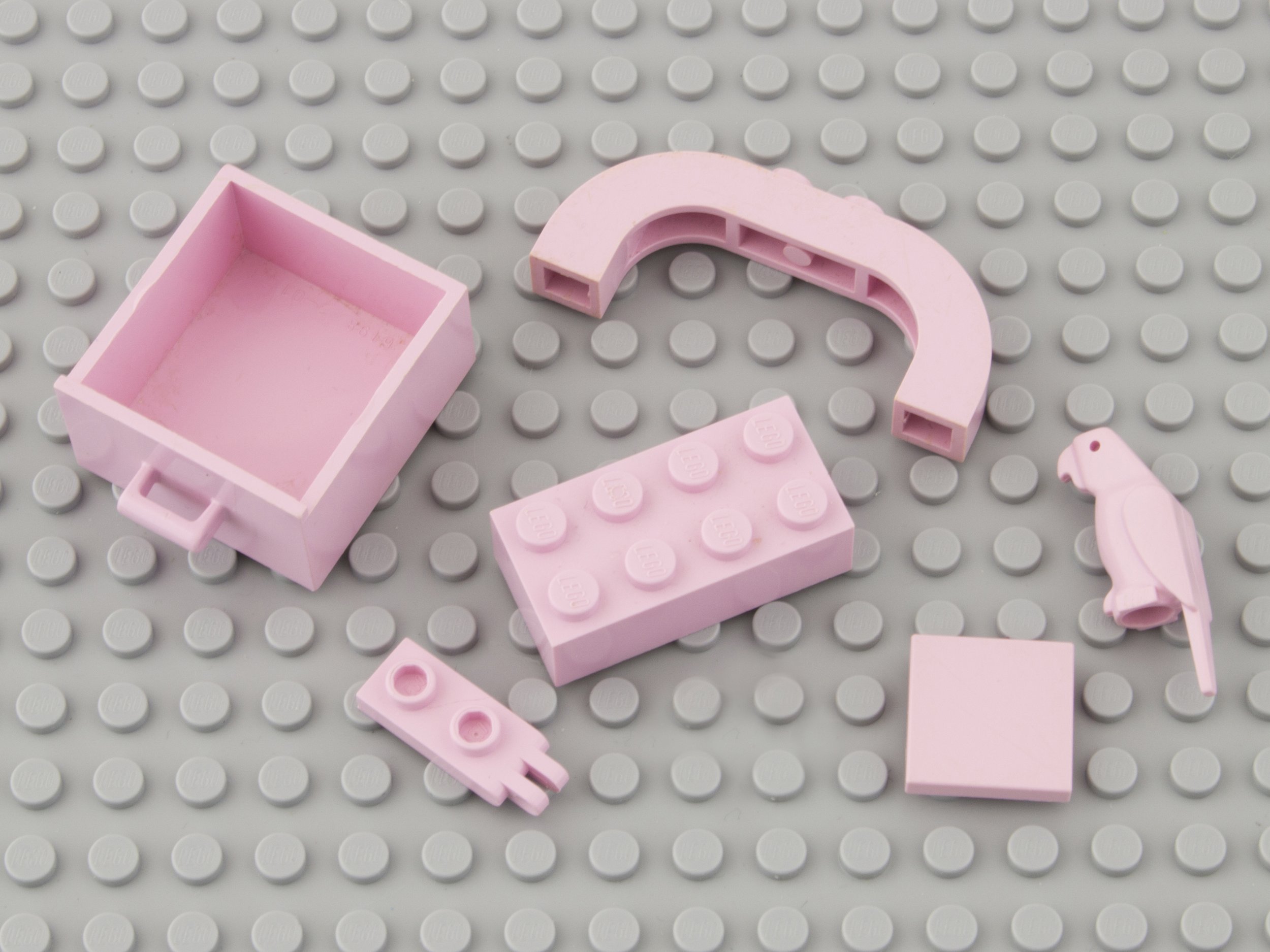
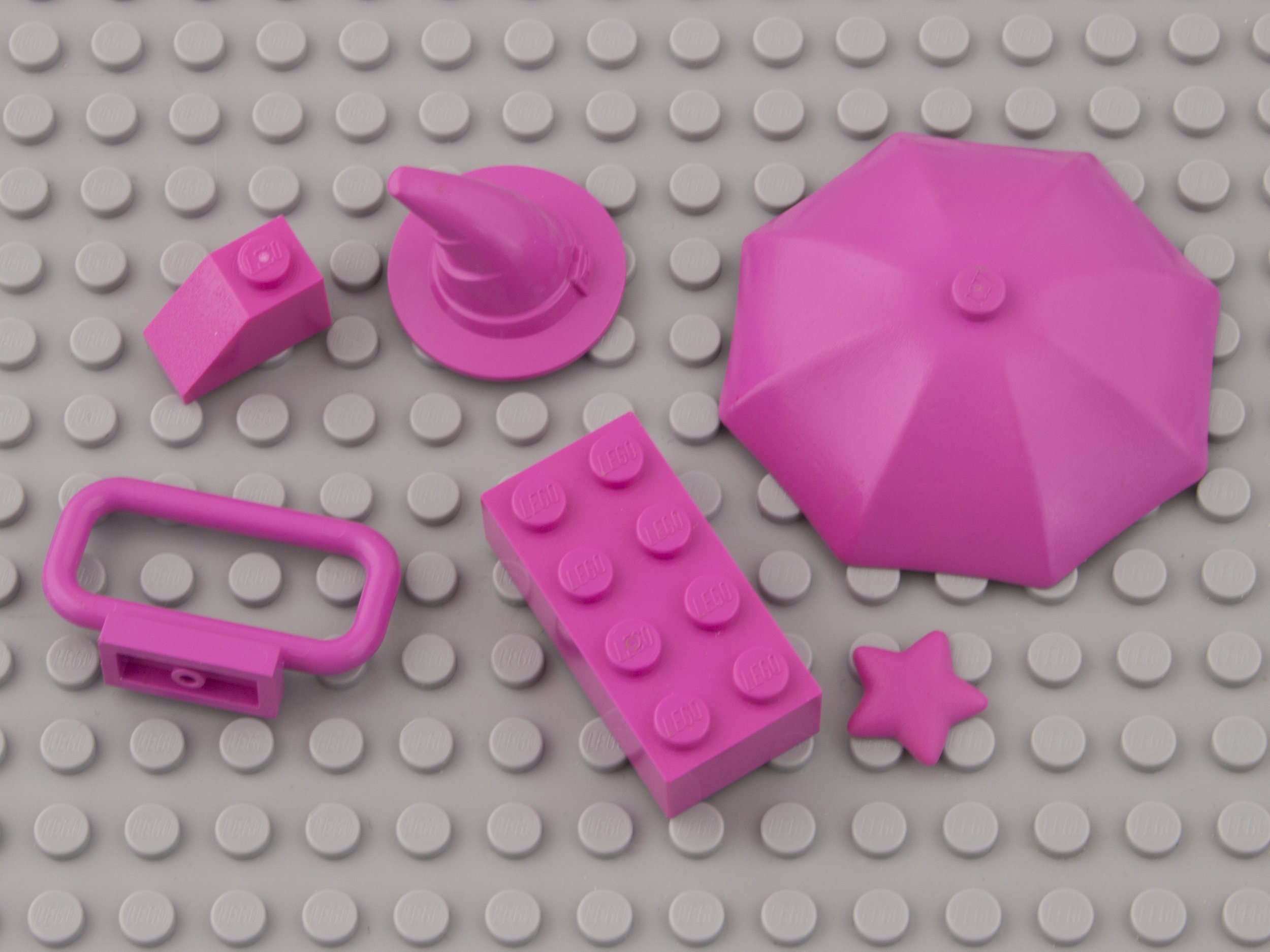
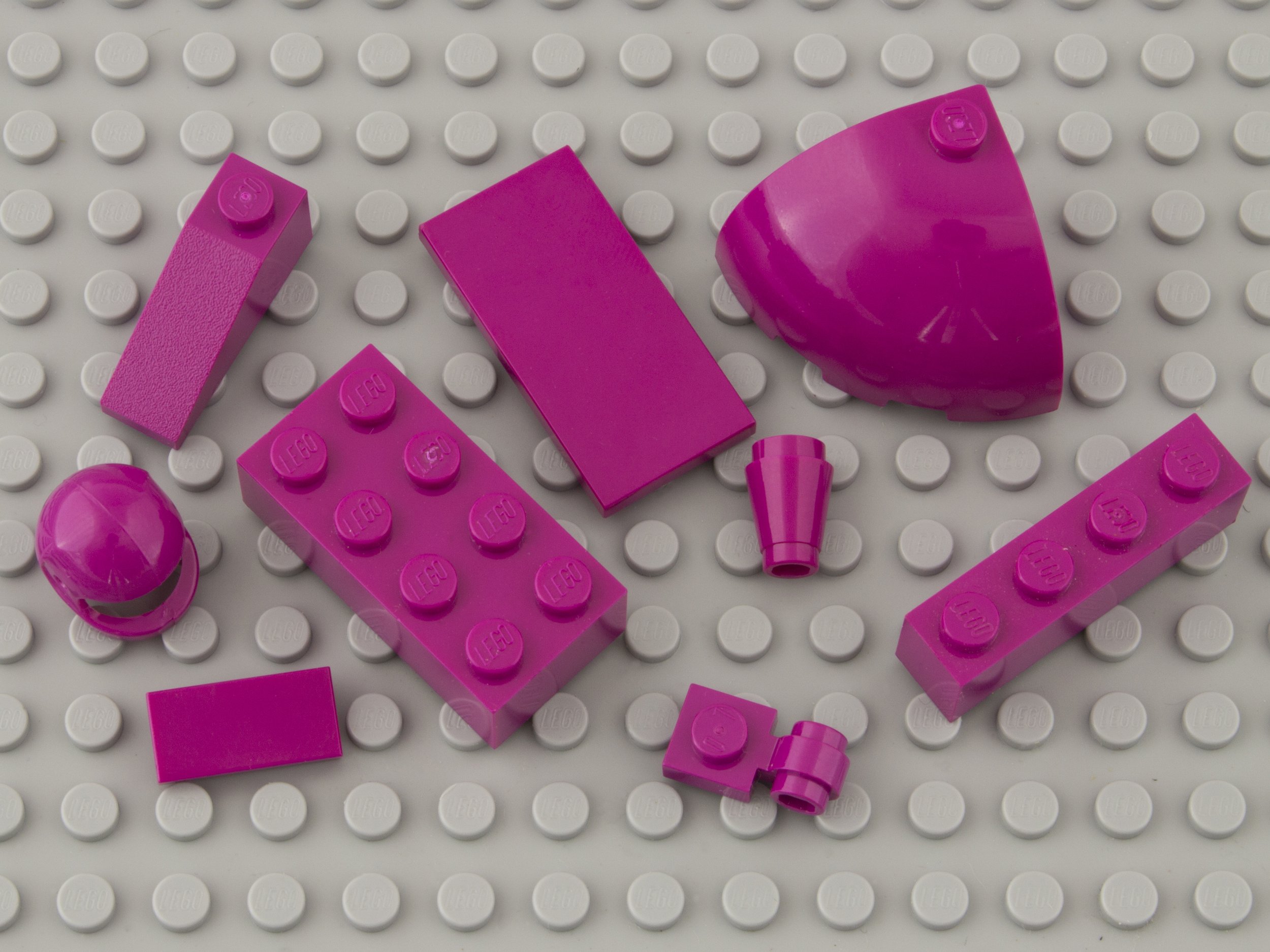
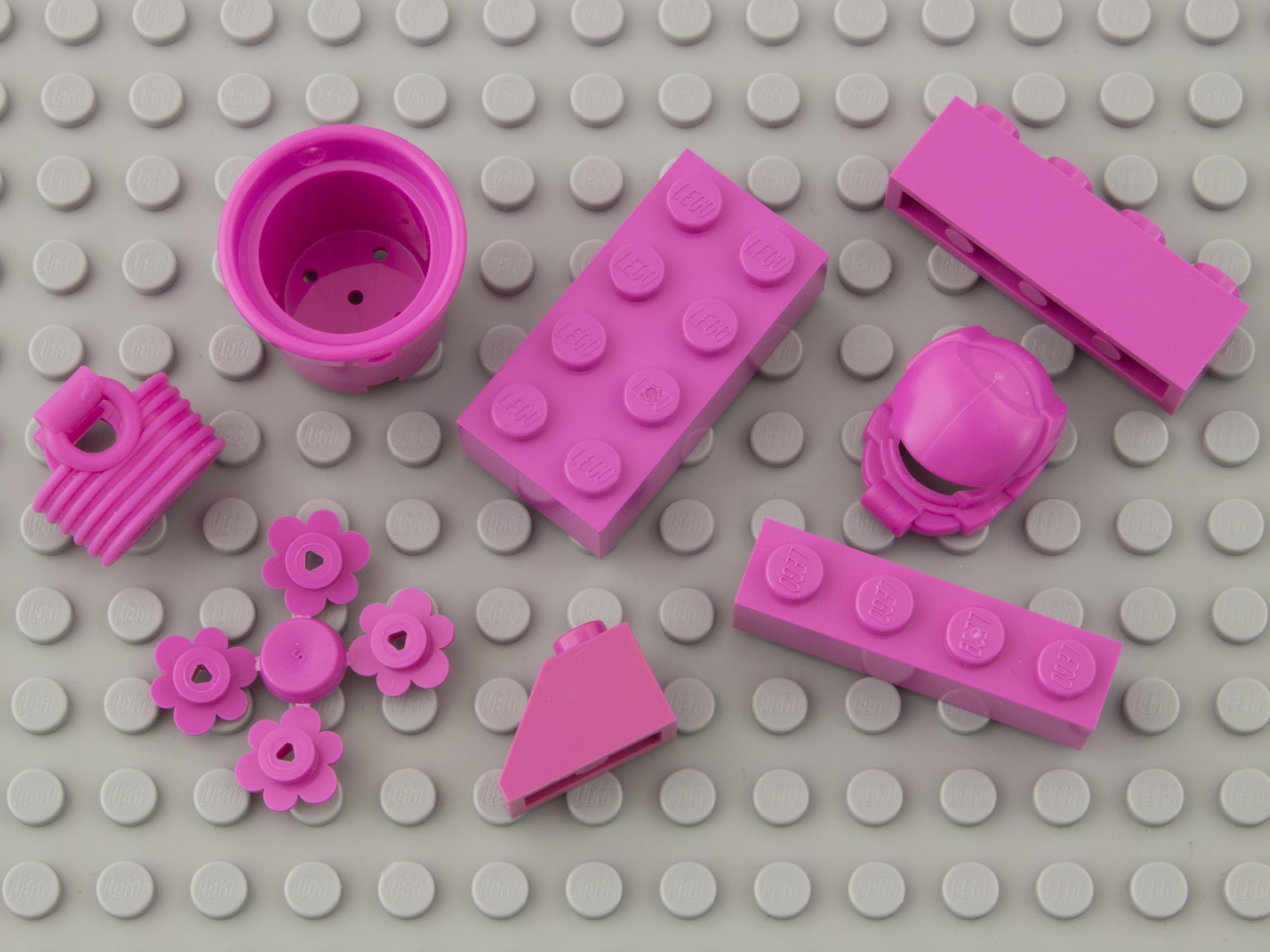
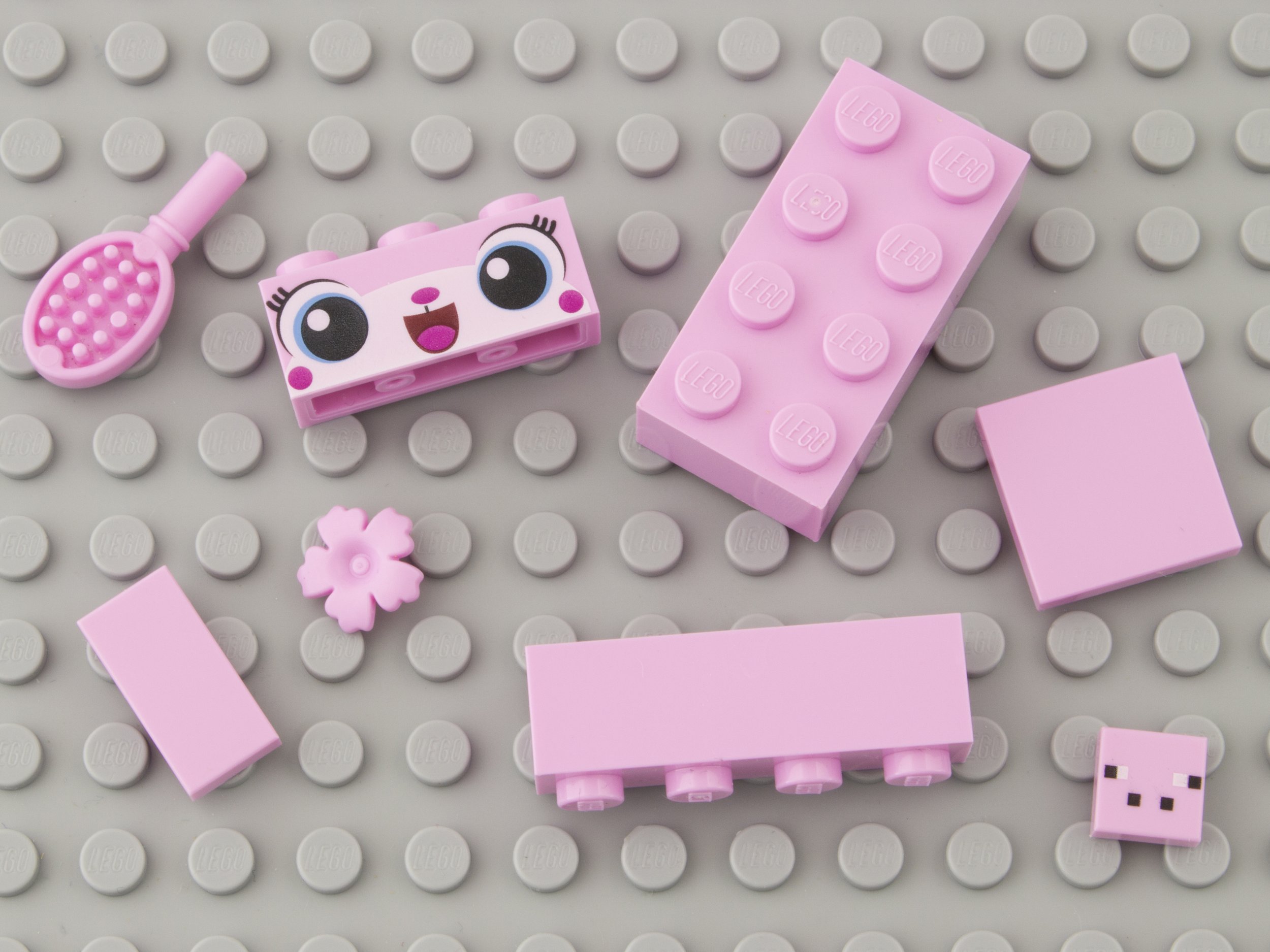
What’s Next?
I have high hopes that the LEGO world is ready for a Paradisa revival! We know that there are Paradisa fans among LEGO Designers (did you notice the reference in 80036 The City of Lanterns?) as well as a growing number of MOC builders. The pastels and neons of Miami Vice, coupled with its criminal undertones, find themselves at home in the vast Cyberpunk collaboration of New Hashima, which you can read more about here.
LEGO Fortnite Brick Life Promotional Image © LEGO and Epic Games
As a last nod to pink, Epic Games and LEGO have just launched a multiplayer role-playing game called LEGO Fortnite Brick Life, apparently heavily inspired by Grand Theft Auto. The opening shot of the promotional video really hits the GTA: Vice City vibes with beachfront Art Deco buildings reminiscent of Ocean Drive—and reminiscent of Paradisa.
It’s just a shame they’re all in the wrong shades of pink!
Have you experienced similar troubles shopping for rare colours? Let us know in the comments below.
Do you want to help BrickNerd continue publishing articles like this one? Become a top patron like Marc & Liz Puleo, Paige Mueller, Rob Klingberg from Brickstuff, John & Joshua Hanlon from Beyond the Brick, Megan Lum, Andy Price, Lukas Kurth from StoneWars, Wayne Tyler, LeAnna Taylor, Monica Innis, Dan Church, Roxanne Baxter, and Steven Laughlin to show your support, get early access, exclusive swag and more.












